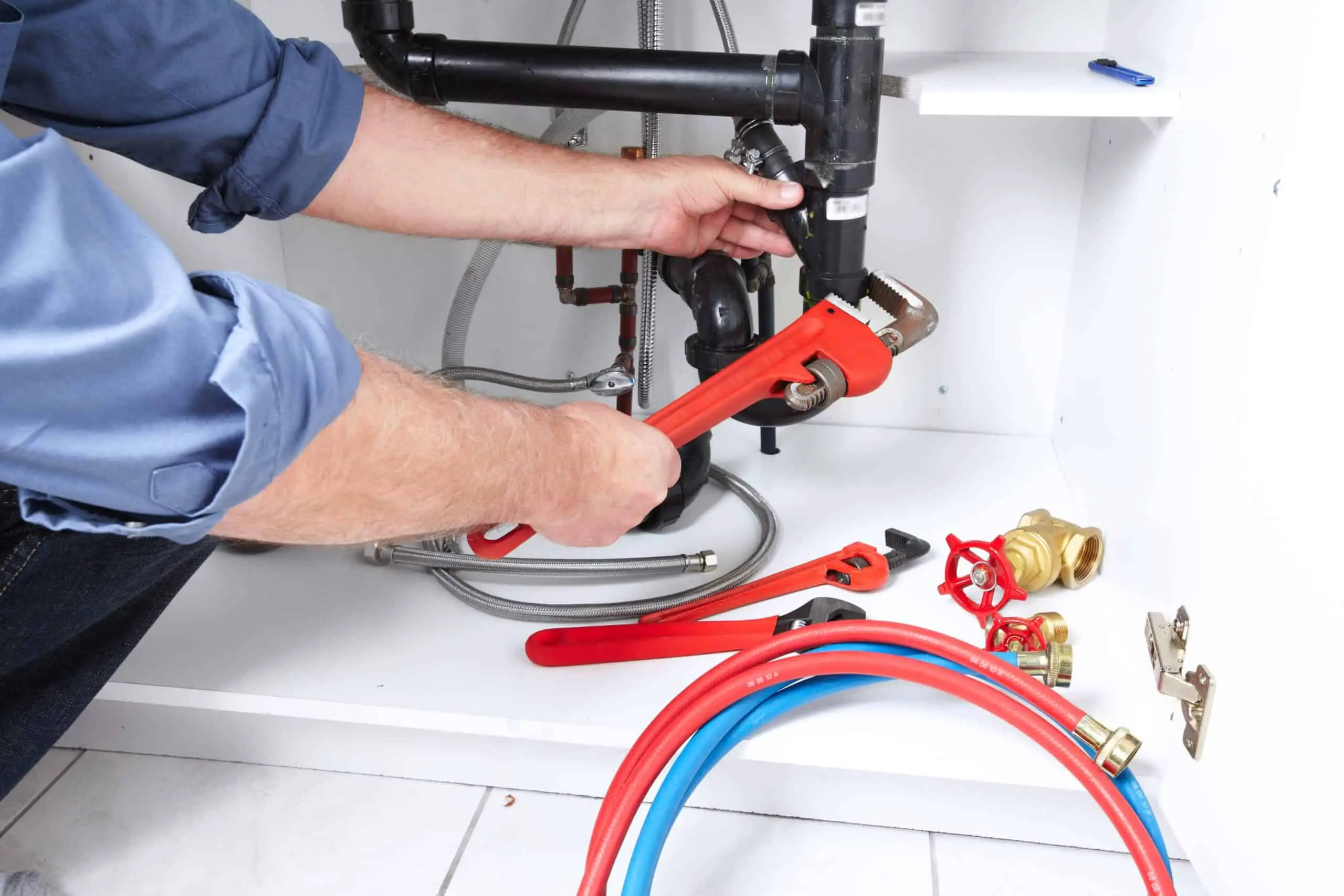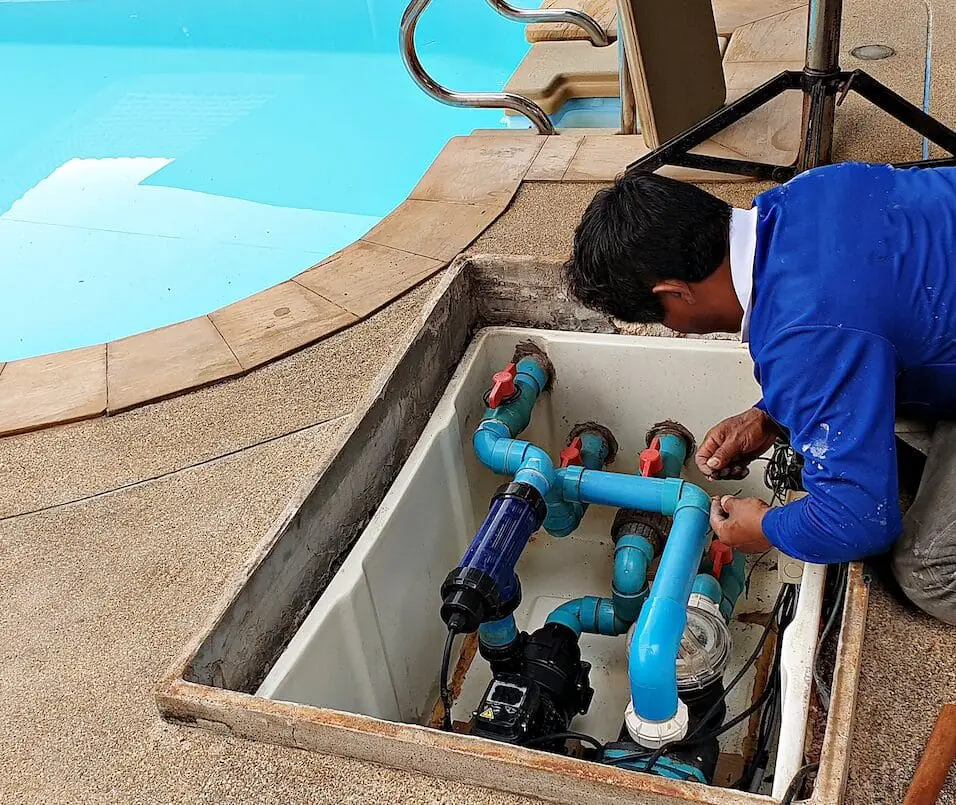When Was Indoor Plumbing Invented
Introduction
Indoor plumbing has become an indispensable feature of modern homes, enabling the easy and convenient distribution of water throughout a building. The ability to access clean water for various purposes, such as drinking, bathing, and sanitation, is often taken for granted in today’s world. However, this convenience was not always readily available. The concept of indoor plumbing and the development of a comprehensive plumbing system is a testament to human ingenuity and progress.
The history of indoor plumbing dates back thousands of years, with evidence of early plumbing systems found in ancient civilizations such as the Indus Valley and Mesopotamia. These early systems primarily consisted of rudimentary drainage systems to dispose of waste, as well as the use of aqueducts and pipes to transport water from nearby rivers or wells.
However, it was not until the late 19th century that the modern concept of indoor plumbing emerged. In 1829, a significant breakthrough occurred with the invention of the first practical water closet, commonly known as the flush toilet, by British engineer Sir John Harington. Although Harington’s invention did not gain widespread adoption initially, it laid the foundation for the development of future plumbing systems.
The true revolution in indoor plumbing came with the advent of urbanization and the need for effective sanitation systems. In the mid-19th century, cities around the world were facing grave challenges due to the lack of proper sanitation, resulting in the spread of diseases and unsanitary living conditions. In response, engineers and inventors began designing comprehensive plumbing systems that would bring clean water into homes and remove waste efficiently.
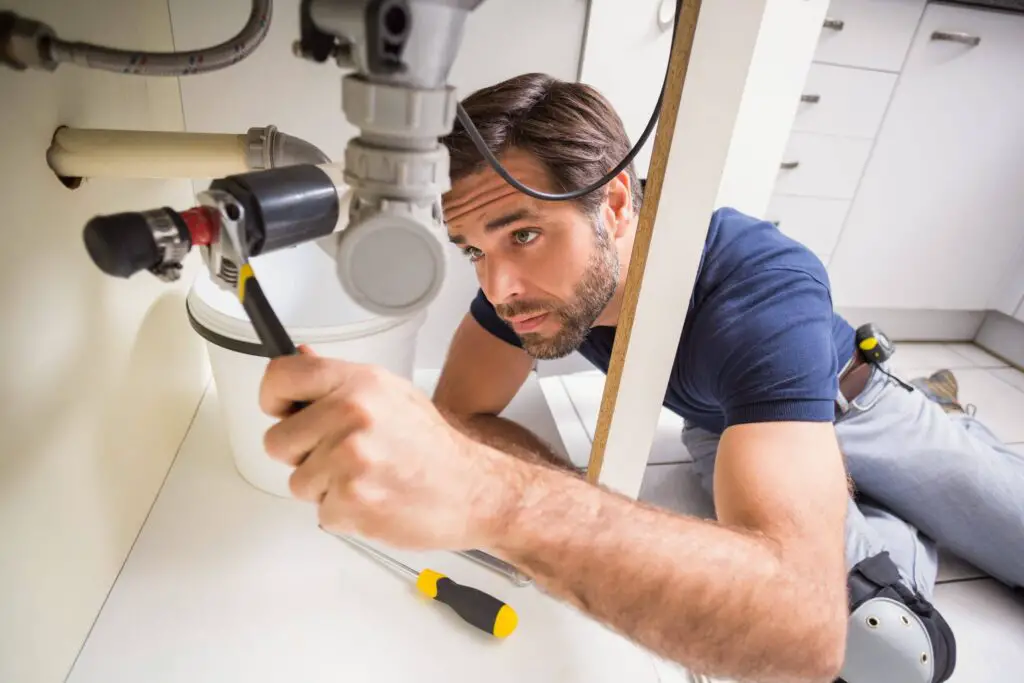
When Was The First Use Of Indoor Plumbing?
To 3,000 B.C.
Plumbing inside buildings started around 4,000 to 3,000 B.C. Copper water pipes were found under buildings in India’s Indus River Valley by archaeologists.
In old societies, the first indoor plumbing systems were built to move water around and get rid of trash. People from the Indus Valley culture, who lived in Pakistan and northwest India around 2500 BCE, may have had the first plumbing systems.
Archaeological digs have shown that Mohenjo-daro, a large town in the Indus Valley, had a complicated system for getting water and getting rid of waste. A system of covered drains and ditches lined with bricks took fresh water and trash away from city homes. Some homes have private bathrooms with toilets that are linked to drains.
In 2000 BCE, when the Minoans lived on Crete, Greece, they built a very complicated water system. In Crete, homes have toilets inside and use clay lines to move trash around.
Roman times, on the other hand, were the first time that indoor plumbing became more common and complex. The Romans were very good at building things, and they built long aqueducts to bring fresh water from far away to their towns. These people also built a complicated system of lead lines to bring water to homes and public buildings.
When Was Indoor Toilets Invented?
In 1596, the first modern toilets and plumbing devices for homes were made.
A number of people came up with flush toilets, also known as indoor toilets. In the late 1600s and early 1700s, people came up with ideas for how to flush toilets.
In 1596, English courtier and Queen Elizabeth I’s godson Sir John Harington built the first flush toilet. His invention, called the “Ajax,” had a water tank and a valve that flushed trash. Even though it was new, his design wasn’t very famous when he was alive.
In the late 1700s, there was another big improvement to the private toilet. In 1775, Alexander Cummings, a Scottish engineer, made the S-trap, a curved pipe that kept sewer gases out. The S-trap was a big step forward in making indoor toilets cleaner and less smelly.
English plumber and sanitary engineer George Jennings made another big step forward in the design of indoor toilets around the middle of the 1800s. The first indoor toilets that were shown to the public were Jennings’ running toilets at The Crystal Palace in London in 1852.
What Came Before Indoor Plumbing?
There were a few different types of ‘bathrooms’ before indoor plumbing came along. Some families used chamber pots. A chamber pot was a large basin one could use to relieve themselves. It would be stored under the bed or in a closet, waiting to be emptied.
Before the advent of indoor plumbing, various methods were used to fulfill the need for water supply and waste disposal. These methods varied greatly depending on the time period, geographical location, and the level of technological advancement in a particular society. Here are a few notable examples:
Wells and Springs: One of the earliest methods of obtaining water was through wells, which involved digging deep holes into the ground to reach the water table. Springs, natural sources of water that bubbled up from the ground, were also used for drinking and other household purposes.
Chamber Pots and Privies: In many ancient civilizations and even during medieval times, chamber pots served as the primary means of waste disposal. These were essentially portable containers that were kept inside homes and emptied manually into designated areas. Privies, or outhouses, were outdoor structures that were used as communal toilets.
Public Baths and Aqueducts: In ancient Rome, public baths were a significant part of social life. These large facilities provided not only a place for bathing but also for socializing. Water was supplied through a complex network of aqueducts, which transported water from distant sources to the city.
Garderobes and Moats: During medieval times, castles and forts often had garderobes, which were small rooms with openings that extended outside the building. Waste would drop down into a moat or a pit below. This method helped keep the living areas relatively clean, but waste management was still a challenge.
Who Invented The Indoor Plumbing System?
In 1826, Isaiah Rogers, an architect, designed the indoor plumbing system for his hotel, The Tremont Hotel in Boston.
The invention of the indoor plumbing system cannot be attributed to a single individual. It is the result of the collective efforts of engineers, inventors, and civilizations throughout history. Here are some key contributors to the development of indoor plumbing systems:
Ancient Civilizations: Early plumbing systems can be traced back to ancient civilizations such as the Indus Valley, Mesopotamia, and Egypt. These civilizations developed rudimentary drainage systems and aqueducts to transport water for various purposes, including bathing and waste disposal.
Sir John Harington, an English courtier and godson of Queen Elizabeth I, designed the “Ajax.” flush toilet in 1596. Harington’s idea was not extensively implemented, but it lay the groundwork for indoor plumbing developments.
Alexander Cummings: Scottish inventor Alexander Cummings created the S-trap, a curved conduit that kept sewage gases out in 1775. Cummings’ idea greatly improved indoor plumbing sanitation.
Thomas Crapper: English plumber and sanitary engineer Thomas Crapper popularized and improved the flush toilet design. After Crapper’s company produced and installed efficient flush toilets in the late 19th century, indoor plumbing became more reliable.
George Jennings: English plumber and sanitary engineer George Jennings advanced indoor plumbing in the mid-19th century. He demonstrated indoor toilets’ practicality and benefits by installing flush toilets in public settings like London’s Crystal Palace. Jennings’ innovations improved water tank and flushing mechanisms.
How Did People Wash Before Indoor Plumbing?
Pre-Indoor Plumbing
Washing took place at a washstand in the bedroom, with a pitcher and a bowl; defecating happened in the outhouse or the chamber pot; bathing, when it occasionally happened, was often in a tub by the stove in the kitchen, where the hot water was.
Basin and Pitcher: One common method was the use of a basin and pitcher. A basin filled with water was placed on a stand or table, and a pitcher was used to pour water over oneself for washing. This method allowed for basic hygiene but required manual labor and a limited water supply.
Public Baths: In many ancient civilizations, public baths were a common feature. These large communal bathing facilities provided access to a constant supply of water for bathing and socializing. People would gather at these baths to cleanse themselves and engage in social activities.
Rivers, Lakes, and Streams: In areas with accessible bodies of water, people often relied on natural sources for bathing. They would visit rivers, lakes, or streams to wash themselves and their clothes. While this method offered a more thorough cleansing, it was subject to the availability and cleanliness of the water source.
Sponge Baths: In situations where water was scarce or during colder seasons, people would often resort to sponge baths. A small amount of water would be used to dampen a sponge or cloth, which would then be used to wipe the body and remove dirt and sweat.
Dry Cleaning: In some cases, dry cleaning methods were employed. This involved using various substances like powders or perfumes to absorb body odors or mask unpleasant smells. Fabrics and garments could also be beaten or brushed to remove dirt and freshen them up.
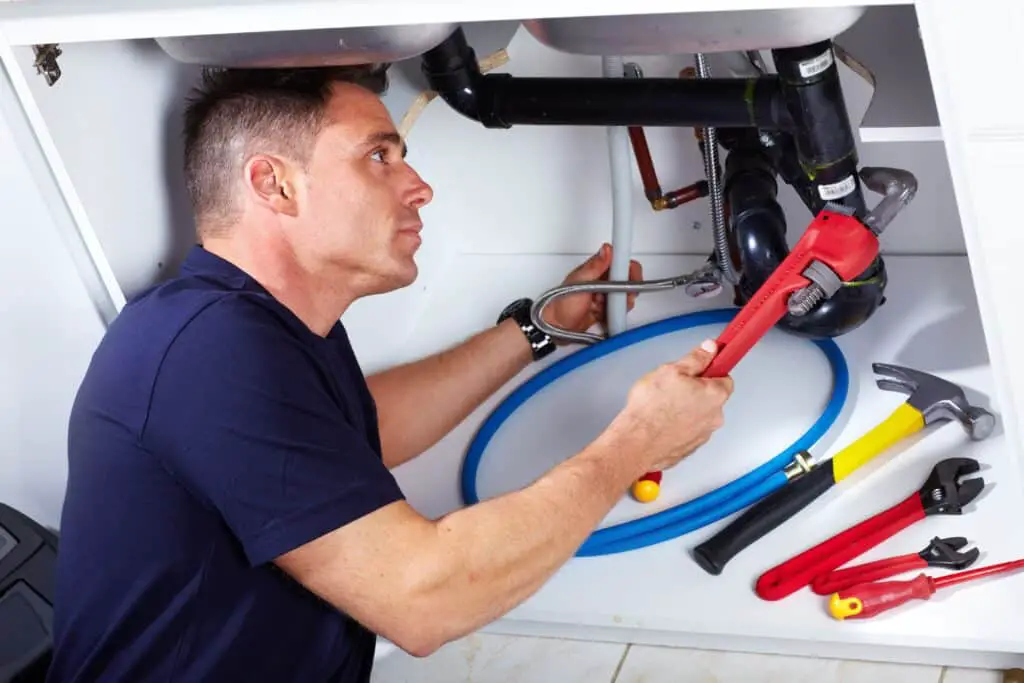
What Ancient City Had Indoor Plumbing?
Some of the oldest towns in the world are in the Indus Valley, which is in northeast India and Pakistan. This is where plumbing was first found. Researchers have found very modern plumbing in Mohenjo-daro and Harappa from around 4000 BCE.
Mohenjo-daro, an old city in Pakistan, may have had the first plumbing inside a building. From 2500 BCE to 1900 BCE, the Indus Valley culture, which included Mohenjo-daro, did very well.
Mohenjo-daro’s excavations showed a very complicated system for planning and building the city, including a water supply and drainage system. Homes were linked to a complicated underground drainage system all over the city by well-built pipes lined with bricks and covered drains.
It’s interesting that some houses at Mohenjo-daro have bathrooms or toilets inside. In these private bathrooms, poop could be dumped directly into the city’s underground sewage system through trenches lined with brick and linked to vertical shafts. Clay lines connected the bathrooms to the drains in the house.
The plumbing in Mohenjo-daro offered clean water and a good way to get rid of waste. The water for some homes may have come from private or public wells. To keep homes clean and germ-free, clay lines and underground drainage moved waste away from them.
What Is The Oldest Known Plumbing?
Copper water pipes found in Indus River Valley palace remains are the oldest plumbing evidence. The pipes date back to 4000-3000 B.C. The Indus Valley’s ancient urban civilization also contained 2700 B.C. earthen plumbing pipelines.
Indus Valley Civilization: Around 2500 BCE, the Indus Valley civilization in Pakistan and northwest India possessed one of the earliest plumbing systems. The ancient cities of Mohenjo-daro and Harappa had well-built brick-lined waterways, covered drains, and complex underground drainage systems.
Ancient Egypt: The ancient Egyptians developed a system of aqueducts and canals to distribute water for drinking, irrigation, and sanitation. The Great Pyramid of Giza, built around 2600 BCE, is believed to have had a complex system of water pipes and drains. Additionally, private homes in ancient Egypt had basic plumbing systems, including toilets connected to underground drains.
Ancient Rome: The Romans are renowned for their engineering prowess, and their plumbing systems were no exception. The Romans built extensive aqueducts to transport water from distant sources to their cities. These aqueducts, made of stone or concrete, carried water to public fountains, baths, and private homes. Roman plumbing also incorporated lead pipes, which were used for the distribution of water within buildings.
Ancient China: Ancient Chinese civilizations, such as the Shang and Zhou dynasties, also had early plumbing systems. The ancient city of Zhengzhou, dating back to 1500 BCE, had a complex underground sewerage system made of stone and ceramic pipes. In addition, the ancient Chinese invented the concept of the flush toilet using gravity-fed water channels.
How Did Indoor Plumbing Change Daily Life?
Indoor plumbing made living cleaner, more convenient, and better. People used dirty, inconvenient methods to collect water and dispose of waste before indoor plumbing was introduced.
Plumbing provided clean, running water in houses. One of the most visible modifications. People had to collect water from wells, rivers, or shared sources, which was slow and harsh on their bodies before this discovery. Indoor plumbing saved humans time and effort by making drinking, cooking, and cleaning water easy.
Having water inside also made it much easier to keep clean. Before it was invented, washing and keeping clean were often hard to do or not done at all. When plumbing systems were invented, people could have their own toilets with showers or tubs, which made it easier to keep clean on a regular basis. In turn, this helped cut down on the spread of disease and make the public’s health better generally.
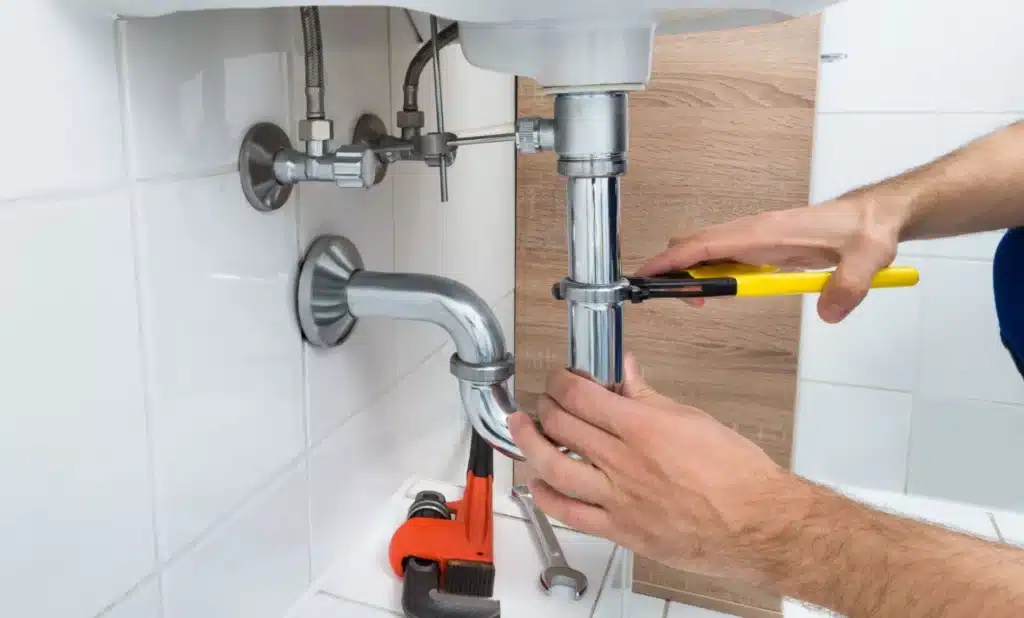
Conclusion
Indoor plumbing has a long and rich history that dates back thousands of years. While the exact timeline and specific inventors may vary, it is clear that the concept of indoor plumbing emerged and evolved over time. Ancient civilizations such as the Indus Valley, Egypt, Rome, and Crete all made significant contributions to the development of plumbing systems.
The invention of the flush toilet by Sir John Harington in 1596 marked a significant breakthrough in indoor plumbing, although it did not gain widespread adoption at the time. Further advancements came with the development of the S-trap by Alexander Cummings in 1775, which improved sanitation and odor control in plumbing systems.
The mid-19th century saw important milestones in indoor plumbing, with George Jennings’ installation of flushing toilets in public spaces and Thomas Crapper’s refinement of the flush toilet design. These advancements popularized indoor plumbing and led to its widespread adoption.



